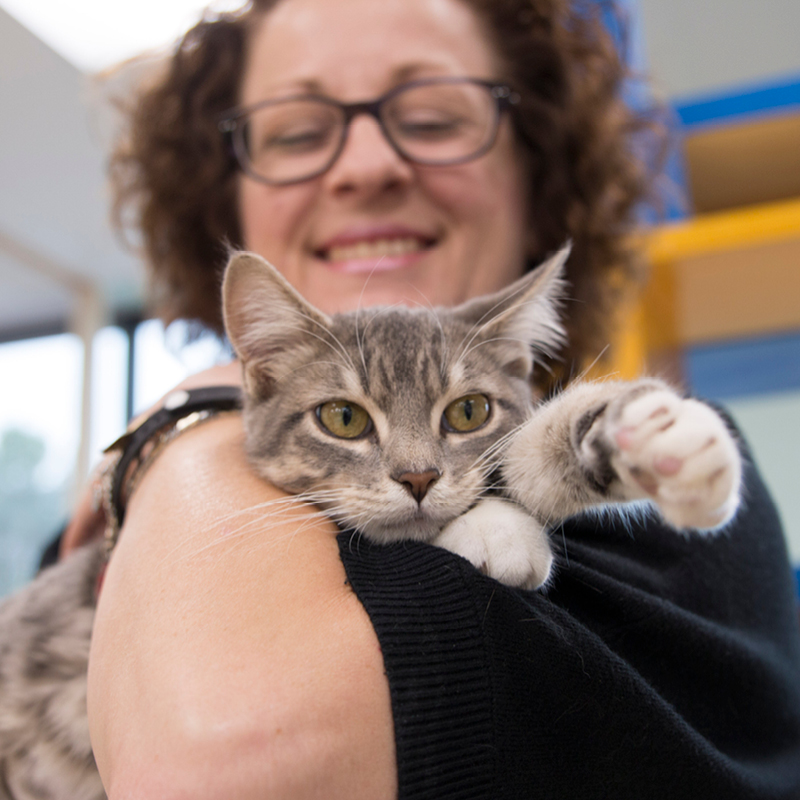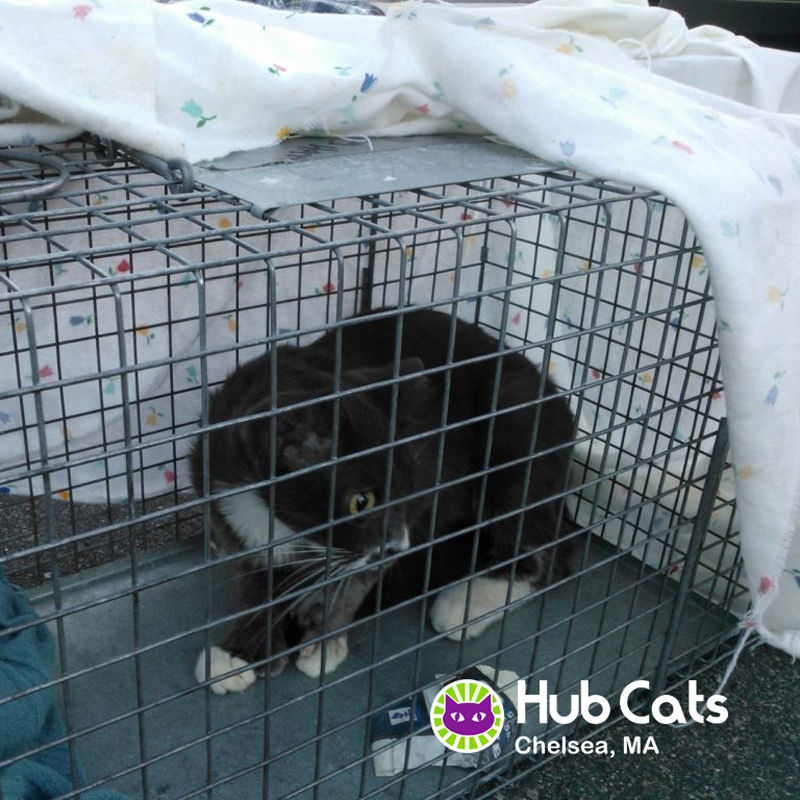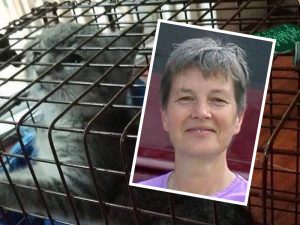
Interview! Dana Andresen, Executive Director, Feline Rescue
January 26, 2019
Interview! Veronica Coit, Asheville Cat Weirdos
February 2, 2019
This week, we are starting an occasional series called Trapper Tips & Tricks, which will profile folks who are involved in trapping community cats. This week we interviewed Laura Burns, president of Hub Cats, a community cat group working in Chelsea, Massachusetts. She is also president of Habitat for Cats, in Rochester, New York. She can be reached at hubcatsboston@aol.com with questions.
If you have tips and tricks you’d like to share, or know of someone we should consider profiling, please email Stacy.
 1. Why did you become a trapper? Why do you support TNR?
1. Why did you become a trapper? Why do you support TNR?
When I became aware that many cats are already living outside, TNR seemed like the best way to help the most cats. Spaying or neutering a cat living outside helps them live a healthier, safer life, while preventing the birth (and often, death) of more homeless cats. Spay/neuter requires minimum time and resources—TNR a colony today, and another next week!
2. Tell us about your first trapping experience.
I happened upon a woman in Brighton MA who was feeding 50 or so cats outside. She’d walk outside with a baker’s tray piled high with food, and the cats would come from everywhere! TNR seemed like the only way available to me to help those cats, and keep them from becoming 100 cats. I asked someone to show me how to trap—and was hooked!
3. If you could give someone one piece of trapping advice what would it be?
People often hesitate over how to trap a cat on schedule, for a vet appointment. I advise people to feed out of a tied-open box trap a week or so before your appointment, starting with the bowl in the opening of the trap, then moving it back as the cat gets more comfortable. The night before your appointment, set the trap. You can find more details on this technique here.
4. What is your favorite type of trap?
A drop trap. We usually catch every cat that shows up. Many high-volume trappers have great success with box traps—but I got tired of waiting for the cats I wanted to go in them. We trapped a small colony this week in 30 minutes: three older kittens together, then mom. Then auntie happened along, so we got her, too. You can learn more about drops trap here.
5. What is the most challenging part of doing TNR?
Having enough access to low-cost spay/neuter.
6. What is the most rewarding part?
Empowering able caregivers to trap their own colonies. With just a bit of advice and resource information, they’re on their way! They are in the best position to catch a newcomer in their colonies before she’s had kittens. They have the most at stake, economically and emotionally, in keeping the colony small—so don’t keep them on the sidelines! They are so excited to learn how to take effective action that so clearly benefits the cats they love, when so recently they were staying up nights, in helpless despair.
7. Anything else you want to share with us?
Find community to share your experience and ask your questions about everything feral cat. I recommend Trap-Neuter-Return Community (TNR Only). Community Cats podcast will raise your sights! You can also check out my list of recommended equipment.
Until our next profile—happy trapping!




